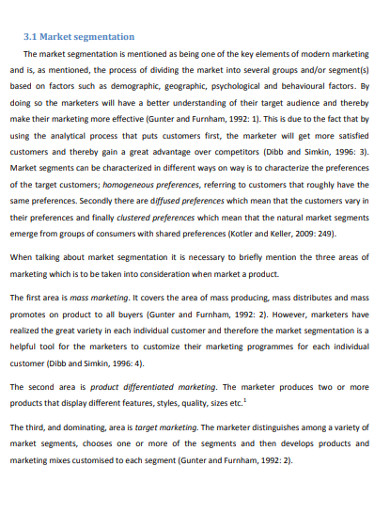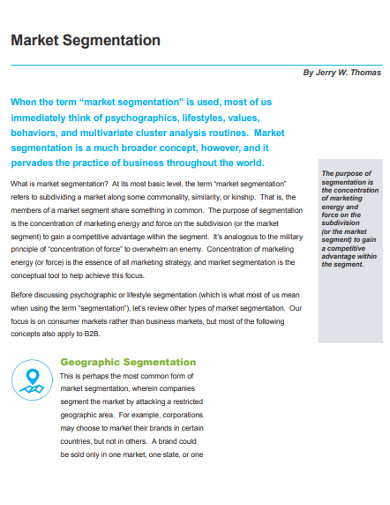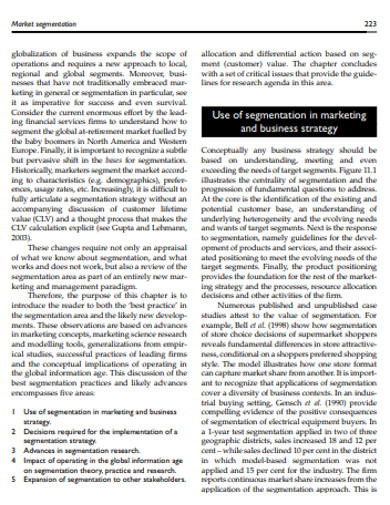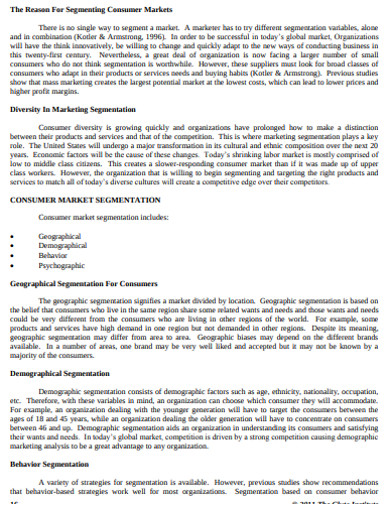Demographic Market Segmentation Examples
There are more young than old people who listen to Taylor Swift. While not a lot of young people today are listening to Doris Day’s songs. The age divide isn’t just true for the music industry. In business, we can divide the population into different categories based on things like age. Often, certain products appeal to a specific group of consumers. Businesses identify this group for personalized marketing agenda using the demographic basis of market segmentation.
Demographic market segmentation splits the market into different demographic categories, like age, race, nationality, religion, gender, marital status, social class, ethnicity, income, occupation, lifestyle, and education. The partition allows companies to identify a target market and generalize the needs of the consumers based on their group.
Demographic Divide
The following are examples of the demographic variables in marketing segmentation. However, with the dynamic marketing trends and changing market, we can expect more kinds of grouping.
Age
The age of the customers is a general indicator of how appealing certain goods and services are to them. Although it is not an accurate predictor of the interest and needs of the consumer, the age can provide a rough sketch of your business’s target market. Individuals between 9 to 18 would be in school and benefit from school supplies. People in their early 20s are typically job seekers and would find work-related materials useful.
Phase
It is worth noting that age-based grouping is not always appropriate in grouping people with the same interest. At times, it can be too broad, thus defeating the purpose of market segmentation analysis. For instance, you can market retirement plans to the working demographic. Residential spaces will attract both young professionals and those nearing retirement. Grouping based on a person’s life phase can help find a suitable market.
Sex
Although men and women share equivalent rights, it is a fact that they have different needs and preferences. There are products in the market that are made and marketed for either sex. The material is generally similar, but companies add details that appeal to both male and female. For example, deodorants and perfumes that come in dark packaging and have a strong, musky smell are for men, as products with pastel colors and floral fragrance are to women.
Economic class
Even today, there are social classes. Generally, individuals who earn more can spend more. People with higher income can enjoy luxury, while people who make a minimum wage will stick to necessities. If you sell expensive life’s extras, you will have more success in focusing your marketing to those who can afford to splurge. A minimum wage-earner is not likely to put a Hermes Himalayan bag purchase over her monthly grocery budget.
Two Sides Of The Coin
Let’s put the principles of demographic market segmentation in a real-world context. Rebecca manages a restaurant. At 29, she is doesn’t have family and child-rearing on her mind. She regularly visits her local dermatologist to monitor her skin allergies. If companies were to target Rebecca for ads, they would bust out their handbook on demographic market segmentation and classify her as an anti-aging-creams-and-baby-products market.
What if 4 in 10 women aged 20-35 are Rebeccas? The companies would have wasted time and resources trying to attract the disinterested 40 percent. Demographic segmentation bears statistical significance. But in this case, it sounds like data-driven guesswork. Does this mean that we scrap demographic segmentation from marketing 101?
There are still significant areas in the market that benefits from the old stereotypes of the demographic-interest relationship. Despite changes over time, children would still be going to school. Women would still have menstruation cycles. Just because the demographic categories no longer accurately predict the lifestyle and needs of a person doesn’t mean that it has no purchasing influence on the market.
Your company’s resources are finite. At some point, the well will run dry when it hasn’t rained in a while. Not to mention, you have a staggering number of competitors all vying for customer loyalty through gimmicks and marketing ploys. By understanding who is the better market for your products, you can refine your business strategy to generate more revenue for less cost. In this case, you will benefit from stereotypes.
3+ Demographic Market Segmentation Examples
Demographic market segmentation will help your business reach to a more likely consumer. Your marketing strategy will pay off when you direct them to the right crowd. The following are examples of this practice.
1. Sample Demographic Market Segmentation Example
2. Simple Demographic Market Segmentation Example
3. Demographic Market Segmentation Strategy Example
4. Formal Demographic Market Segmentation Example
Using Demographic Market Segments
When your company benefits from dividing the market into demographic categories, you will find the following tips useful.
1. Research
For you to know how to divide your market, you have to know your market through market research. You can also look into previous business transactions and analyze the kind of people who transacts with your brand the most. You can look into the items they avail from you, and the time at which they avail these. You can also collect demographic data from accredited public sources for a wider scale of research on the potential market.
2. Survey
It is in asking that you’ll know the answer. Rather than guess, you can ask the consumers directly. You can create an organize your surveys, or you can seek the help of third-party business solutions agencies. Surveys are easier to administer, and for a small cost, you can gain valuable insights into the tastes and trends of the market. Get a wider scope of data by using websites and social media pages. Don’t forget to attach the basic demographic questionnaires in your surveys.
3. Divide
The value of data lies in what you can get from it. Once you have your data, identify the commonalities shared by the consumers. It could be that women ages 20-26 are the most valuable buyers for your company’s swimwear lines. Or on certain months more than others, students are googling for airline tickets. Therefore, you can divide the market into respective segments that identify the most likely consumers.
4. Target
Once you identified the kind of people in the population whom your brand resonates with, you can realign your marketing message that these people will relate to. For example, swimwear ads can be about fun, summer adventures, and body positivity. Airlines can put up student-friendly prices during those months that the students are searching for tickets. When you understand your target market, you can redirect your marketing resources to gain valuable returns.
Market segmentation is research on the significant intersections of interest in your market. It allows more personalized marketing messages in ads and company positioning that are suited to the reason why these people come to you in the first place. When your brand resonates with what your target consumers identify with, you will have a strong and stable following.






